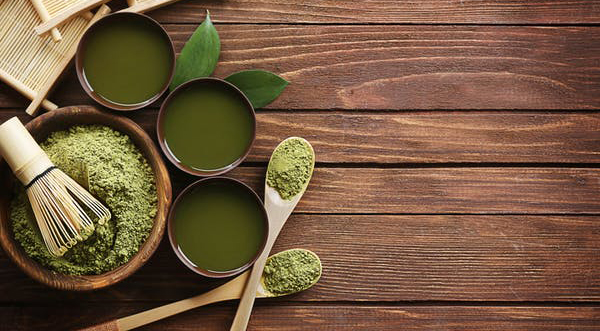The Complete Guide to Kratom Consumption: Methods, Dosage and Safety
By Space Coast Daily // April 4, 2024

Welcome to the ultimate guide on Kratom consumption. Whether new to this natural herb or a seasoned user, this comprehensive guide will provide valuable insights into the various consumption methods, correct dosages, and essential safety precautions.
Navigating the world of Kratom can be overwhelming, but fear not! We have done the research, so you don’t have to. In this guide, we will walk you through the different ways to consume Kratom, including traditional methods such as chewing leaves and brewing tea, as well as more modern options like capsules and powders.
What is Kratom?
Kratom, scientifically known as Mitragyna speciosa, is a tropical evergreen tree native to Southeast Asia. Its leaves have been used for centuries by indigenous communities for their medicinal and recreational properties. Kratom contains active compounds called alkaloids, the most prominent of which are mitragynine and 7-hydroxy mitragynine. These alkaloids interact with the body’s opioid receptors, producing a range of effects depending on the dosage and strain of Kratom consumed.
Kratom leaves are typically dark green and glossy, and they can be harvested, dried, and ground into a fine powder. This powder is then used in various forms of consumption, including teas, capsules, and extracts. Some people also chew the raw leaves or smoke them. The effects of Kratom can vary from stimulating and energizing to sedating and relaxing, depending on the strain and dosage.
When exploring different strains, such as red bali kratom, it’s important to understand the unique effects each can offer.
Different methods of consuming Kratom
- Chewing leaves: Traditionally, Kratom leaves were chewed by the natives of Southeast Asia. This method involves taking fresh Kratom leaves, removing the central vein, and chewing the remaining leaf material. The saliva breaks down the plant material, releasing the active compounds, which are absorbed through the oral mucosa. Chewing Kratom leaves can provide a more immediate and potent effect compared to other methods.
- Brewing tea: Kratom tea is another popular and traditional way of consuming Kratom. The dried Kratom leaves or powder are steeped in hot water for several minutes to make Kratom tea. The active compounds are extracted into the water, creating a brew that can be consumed. Kratom tea is known for its milder and more gradual effects compared to chewing leaves or other methods.
- Capsules and tablets: For those who prefer a more convenient and discreet method of consumption, Kratom capsules and tablets are available. These are pre-measured doses of Kratom powder enclosed in gelatin or vegetarian capsules. They can be swallowed with water or any other beverage, allowing for precise dosage control. Capsules and tablets are a popular choice among Kratom enthusiasts who want a convenient and tasteless way to consume the herb.
- Powders and extracts: Kratom powder is the most versatile form of Kratom. It can be mixed into beverages like juice or smoothies or added to foods like yogurt or applesauce. Kratom extracts, on the other hand, are highly concentrated forms of Kratom that offer a more potent effect. They are typically produced by boiling down Kratom leaves into a resin or powder form. Extracts can be consumed independently or added to other beverages or foods.
And, if you want, come over here to find out the best options near you.
Kratom dosage guidelines
Determining the right Kratom dosage is crucial for achieving the desired effects while avoiding potential side effects.
The appropriate dosage can vary depending on body weight, tolerance, and individual sensitivity. It’s important to start with a low dosage and gradually increase it until the desired effects are achieved. Here are some general dosage guidelines:
- Low dose: 1-2 grams of Kratom powder. This dosage range is known for its stimulating and energizing effects. It can increase focus, motivation, and sociability.
- Moderate dose: 2-4 grams of Kratom powder. This dosage range offers a balanced effect, providing both stimulation and relaxation. It can enhance mood, relieve stress, and promote a sense of well-being.
- High dose: 4-6 grams of Kratom powder. This dosage range is more sedating and relaxing. It can be beneficial for managing pain, improving sleep quality, and inducing a state of calmness.
It’s important to note that these dosage guidelines are general recommendations, and individual responses to Kratom may vary. It’s always recommended to start with the lowest effective dose and gradually increase if needed.
Safety considerations when consuming Kratom
While Kratom is generally considered safe when used responsibly, there are some essential safety precautions to keep in mind:
- Quality and sourcing: Ensure that you are purchasing Kratom from a reputable vendor who tests their products for purity and contaminants. Low-quality or adulterated Kratom can pose health risks.
- Dosage awareness: It’s crucial to be aware of the dosage you are consuming. Taking too much Kratom can lead to adverse effects such as nausea, dizziness, and sedation. Start with a low dose and increase gradually to find your optimal dosage.
- Avoid mixing with other substances: Kratom should not be combined with alcohol, prescription opioids, or other sedatives. Mixing Kratom with these substances can increase the risk of respiratory depression and other adverse effects.
- Stay hydrated: Kratom can have dehydration effects, so it’s important to drink plenty of water throughout the day to stay hydrated.
- Listen to your body: How your body reacts to Kratom. If you experience any negative side effects or discomfort, reduce the dosage or discontinue use.
Common misconceptions about Kratom
Despite its long history of use and potential benefits, Kratom has faced its fair share of misconceptions. Let’s debunk some common myths:
- Kratom is a synthetic drug: Kratom is a natural herb derived from a plant. It is not a synthetic drug or a chemical compound.
- Kratom is addictive: While Kratom does interact with opioid receptors, leading to a potential for dependence, it is not inherently addictive. Responsible use and proper dosage can minimize the risk of dependence.
- Kratom is a cure-all: While Kratom has been used for various purposes, it is not a magic cure for all ailments. It should be approached as a complementary tool in a holistic approach to health and wellness.
- Kratom is illegal everywhere: Kratom legality varies from country to country and within different states. It’s important to research and understand the legal status of Kratom in your area before purchasing or consuming it.












